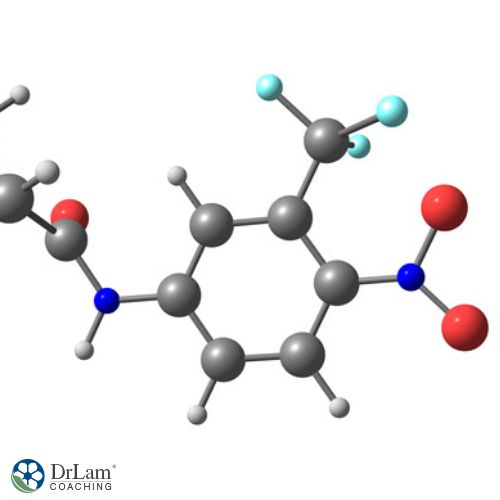 There are a lot of hormones in the body, each serving important roles. One of the more common hormone groups is the androgen hormones, which are sex hormones. Androgens are referred to as male hormones because of their high amounts in men, but studies have shown that they are also present and useful in women.
There are a lot of hormones in the body, each serving important roles. One of the more common hormone groups is the androgen hormones, which are sex hormones. Androgens are referred to as male hormones because of their high amounts in men, but studies have shown that they are also present and useful in women.
In this article, we will take a deeper dive into these hormones and their effects on male and female bodies.
The androgen hormones are a group of sex steroid hormones that play a significant role in puberty, reproductive health, and body development in both male and female bodies.
While androgens are present in men and women, they are present in much higher amounts in the male body, giving men their male traits and characteristics. As such, many refer to them as male hormones.
In men, the testis is the primary site of the production of androgens. Conversely, the ovaries, adrenal glands, fat, and skin cells produce androgens in the female body.
Like all hormones, excesses and deficiencies in the different types of androgens present certain symptoms and conditions. This applies to both men and women, and the body needs to have just the right amount.
Contrary to common beliefs, multiple androgen hormones exist in the body, not just testosterone. The different types may act directly or serve as precursors for other essential sex hormones. We will consider these types below.
This androgen is a pro-hormone because it has few direct effects by itself. The adrenal glands and reproductive organs of males and females produce androstenedione. However, the testis produces the bulk of androstenedione in men.
While the testis produces large amounts of this androgen, only a little makes its way into the blood. Instead, the testis uses this androgen to produce testosterone. In women, the body converts androstenedione into testosterone and estrone.
The control of this hormone is quite complex. The adrenocorticotropic hormone oversees the production of androstenedione in the adrenal glands. Likewise, the luteinizing hormone (LH) in men and follicle-stimulating hormone in women control androstenedione’s release in the testis and ovaries.
Abbreviated as DHEA, dehydroepiandrosterone is a steroid hormone that serves as a precursor for other hormones, including testosterone and estradiol. Similar to androstenedione, DHEA does not have clear effects or known receptors.
Furthermore, the liver, adrenal cortex, ovarian theca cells, testis Leydig cells, and brain are responsible for synthesizing DHEA. The levels of this hormone change throughout life, usually peaking in early adulthood and gradually declining with age.
In women, DHEA is the main source of estrogen. It produces about 75 percent of estrogen before menopause and all of the body’s estrogen after menopause.
The brain controls the production of this hormone in a negative feedback loop. In other words, DHEA production depends on its levels in the body. When its levels fall in the body, the brain stimulates its production. Similarly, as levels increase, the brain limits its production.
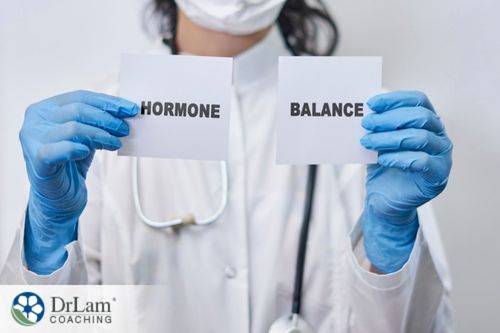 Hormonal control is vital to the proper functioning of the body. Hormone imbalance is common in conditions like Adrenal Fatigue Syndrome (AFS). This condition occurs when the adrenals cannot keep up cortisol production to deal with chronic stressors. Because cortisol, the "stress hormone", uses the same precursors as many other hormones, including androgen hormones, excess stress can deplete or imbalance all of these hormones.
Hormonal control is vital to the proper functioning of the body. Hormone imbalance is common in conditions like Adrenal Fatigue Syndrome (AFS). This condition occurs when the adrenals cannot keep up cortisol production to deal with chronic stressors. Because cortisol, the "stress hormone", uses the same precursors as many other hormones, including androgen hormones, excess stress can deplete or imbalance all of these hormones.
The body has an inherent stress-coping mechanism known as the NeuroEndoMetabolic (NEM) Stress Response. The NEM consists of various related organs and systems in different circuits. The circuit concerned with hormonal regulation is the Hormone circuit, consisting of adrenal glands, thyroid, and gonads. This hormone circuit is heavily concerned with regulating sex hormones in the body.
This is basically dehydroepiandrosterone attached to sulfur and is how the body primarily circulates DHEA in the blood. Dehydroepiandrosterone sulfate (DHEAS) is necessary to prevent the body from breaking down the hormone during circulation.
DHEAS is mostly produced in the adrenal glands, with the remainder produced in the testis and ovaries. Like DHEA, dehydroepiandrosterone sulfate does not have clear effects itself.
Also known as DHT, dihydrotestosterone is an active metabolite of testosterone. The body converts about 10 percent of the daily produced testosterone to DHT.
It is one of the two androgen hormones with direct androgenic activity. In fact, despite being less common than testosterone, DHT is the most powerful androgen, attaching more readily and for longer to the same sites as testosterone. Also, many of testosterone’s effects in the body only occur after its conversion to the more potent dihydrotestosterone.
Many refer to DHT as a pure androgen because it cannot be converted to estrogen, playing several critical roles in the development of the male reproductive system and several male traits.
DHT is key in developing the penis and prostate gland in male fetuses. Also, in adolescents, increased DHT production help kick start puberty and allows for the development of secondary sex characteristics. These include the growth of pubic hair, a deeper voice, increased muscle mass, and the development of the genitals.
As humans approach adulthood, DHT becomes heavily involved in hair production. This holds true for both men and women but is more pronounced in men. Male pattern baldness or androgenetic alopecia is among the most frequent reasons for hair loss in men, and studies have linked it with DHT levels.
This is by far the commonest of the androgen hormones in all genders and is the main male sex hormone. The primary production sites are the testis for men and ovaries for women. However, men have up to 25 times more testosterone than women.
Despite having direct effects on androgen receptors, the body also converts testosterone to estradiol and dihydrotestosterone, both bioactive metabolites. Testosterone production significantly increases during puberty and begins to fall beyond age 30.
This androgen is critical in the start and completion of puberty, bone development, increased muscle mass, body hair growth, sperm production, and regulating sex drive.
Being the main male sex hormone, testosterone is subject to different pathways in the body. These pathways form the foundation of testosterone physiology and ultimately give insight into the workings of the androgen hormones.
Below, we will examine the pathways of biosynthesis and the action of testosterone.
In men, testosterone is almost exclusively produced in the Leydig cells of the testes. On the other hand, the female body produces testosterone from various locations. The ovaries and adrenal glands roughly produce about 50 percent of female testosterone, with peripheral tissues producing the other half.
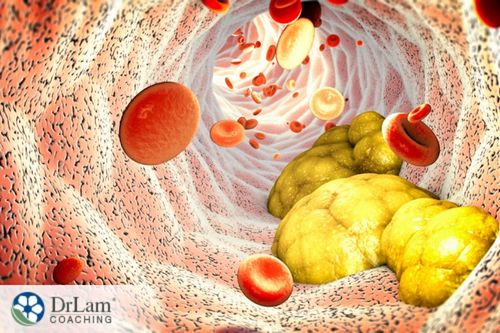 Cholesterol in the testis begins the biosynthetic pathway of testosterone in men. Two multifunctional cytochrome P-450 complexes mediate necessary hydroxylation and side-chain scission reactions.
Cholesterol in the testis begins the biosynthetic pathway of testosterone in men. Two multifunctional cytochrome P-450 complexes mediate necessary hydroxylation and side-chain scission reactions.
The rate-limiting step in producing this androgen is the LH-regulated conversion of cholesterol to pregnenolone within the Leydig cell mitochondria. All other enzymatic steps take place in the endoplasmic reticulum of this cell.
Outside of the testis, the body converts pro-androgens, like DHEA, into testosterone and DHT. However, this is minor compared to testicular production. The hormone circuit of the NEM manages the production and regulation of sex hormones.
After secretion by the testis, testosterone undergoes one of four primary action pathways. This informs how the body uses testosterone. These pathways are as follows:
In this pathway, testosterone moves directly into tissues to activate the androgen receptors. The naming of this pathway comes from testosterone being used directly at the receptor site rather than being converted into either of its bioactive metabolites. This pathway is common in skeletal muscles.
The amplification pathway involves the conversion of testosterone into the more potent metabolite, dihydrotestosterone. The enzyme that facilitates this conversion is 5α-reductase, which occurs in two forms.
The first form is Type 1 5α-reductase, and the major expression sites are the kidneys, liver, skin, and brain. The second form is Type 2 5α-reductase and is primarily expressed in the prostate and, to a lesser extent, the skin and liver.
The amplification mechanism of testosterone depends on the specific tissue where the pathway is operated.
This pathway occurs more frequently in the brain and bones. Here, the enzyme aromatase converts testosterone into estradiol. When this happens, estradiol activates the estrogen receptors instead of the androgen receptor, as with testosterone and DHT.
The diversification mechanism of testosterone is essential to allow the androgen to elucidate certain biological, estrogenic effects that are usually different from the regular androgen receptor effects.
Only about 0.2 percent of circulating testosterone undergoes this process.
The fate of most of the testosterone the testis secretes is inactivation by the liver, kidney, muscle, and gut. Of these organs, the liver is the most implicated in the inactivation pathway through oxidation and conjugation reactions. These reactions convert testosterone into inactive metabolites for urinary and biliary excretion.
Known as the male sex hormone, androgens are more prominent in men. Testosterone is the commonest of all androgen hormones in the male body. The roles of androgen hormones in men include the following:
A dysregulation of androgen hormones could happen in men, and several symptoms and conditions often accompany the dysregulation. The effects of abnormal androgen levels are more significant in men than women.
Per different studies, the normal range of testosterone for men is 300 to 1000 nanograms per deciliter of blood. No exact value is considered normal because there are different body systems, and it is impossible for all men to have the same testosterone level. Also, testosterone levels in men are expected to decrease with age, meaning older people will likely be closer to the lower limits.
Nevertheless, the range guides many experts in assessing androgen dysregulation. Below are the two possible abnormalities and their effects.
Androgen deficiency is a condition where the body produces less than the required amount of androgen hormones, particularly testosterone. There are various reasons this could happen, including medical conditions like cancer and certain genetic disorders, like Kallmann’s syndrome.
Some of the symptoms associated with androgen deficiency include:
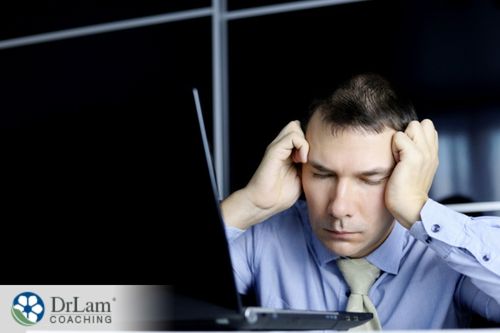
Many of these symptoms are not specific and can be due to other medical conditions. Also, this deficiency is linked to a dysregulation of the Hormone circuit of NEM. This can lead to adrenal fatigue, which also has overlapping symptoms like reduced sex drive, fatigue, and abdominal fat.
Note that not all men with androgen deficiency show these symptoms.
In line with the normal range, testosterone levels higher than 1000 nanograms per deciliter of blood is excessive. These may result in certain undesirable symptoms, too. They are as follows.
While excess androgen is possible, it rarely happens due to natural causes. Rather, it is often a result of steroid use and serious medical conditions.
While androgens are significantly higher in men, they also have important functions in women. Unlike men, DHEAS and DHEA are the highest circulating androgens in women. These hormones do not have any effects by themselves and usually serve as precursors for estrogen or testosterone.
The roles of androgen hormones in women include the following:
Androgen dysregulation could also occur in women. The effects will not be as significant as in males, but there will also be undesirable symptoms.
According to the CDC, the normal range of testosterone in women is roughly 8 to 50 nanograms per deciliter of blood. However, it is normal for older women to have significantly fewer androgens as production tapers with age.
Below are the signs and symptoms that accompany androgen deficiency and excesses.
Androgen hormone deficiency in females is a condition with lower androgens in the female body than is required. This will also lead to a deficiency of estrogens in the body.
The symptoms of this condition are:
One of the complications that could accompany hormone circuit dysregulation in females is the disruption of the ovarian-adrenal-thyroid (OAT) axis. This axis is important in maintaining a healthy reproductive system and estrogen levels in women.
If the dysregulation of the hormone circuit persists, it could lead to adrenal fatigue. This can be accompanied by increased symptoms of premenstrual syndrome (PMS), with irregular and heavy periods.
Certain symptoms may arise if a woman has more than 50 nanograms of testosterone per deciliter of blood. They include:
Excess androgens in women may be caused by polycystic ovary syndrome (PCOS), congenital adrenal hyperplasia, or tumors. Also, steroid abuse can lead to excessive androgen production.
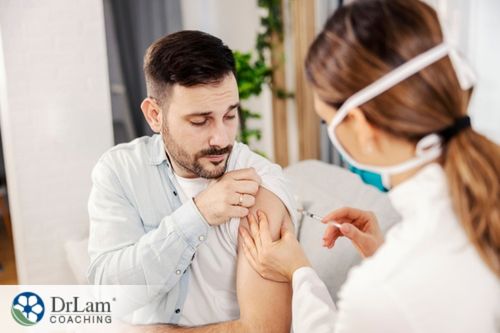 This is the commonest therapy for androgen deficiency for men and women. Also known as testosterone replacement, this therapy involves using certain products and injections to increase the body’s testosterone. The products are typically topical, in the form of skin gel creams and patches. Always consult a doctor before embarking on testosterone therapy as you do have to get regularly checked for symptoms and bloodwork to ensure the right range in your body. If you're too sensitive to do testosterone, some alternatives could be starting with DHEA and pregnenolone.
This is the commonest therapy for androgen deficiency for men and women. Also known as testosterone replacement, this therapy involves using certain products and injections to increase the body’s testosterone. The products are typically topical, in the form of skin gel creams and patches. Always consult a doctor before embarking on testosterone therapy as you do have to get regularly checked for symptoms and bloodwork to ensure the right range in your body. If you're too sensitive to do testosterone, some alternatives could be starting with DHEA and pregnenolone.
Androgen replacement therapy is a common procedure, and the risks are often low in men. However, some side effects may arise. They include the following:
Females may experience side effects like the development of masculine characteristics and mood disturbances. The therapy is not recommended for people hoping to have children.
Ensure you speak to your healthcare provider before embarking on any form of androgen therapy.
Androgen hormones are a group of sex hormones responsible for developing male traits and maintaining both the male and female reproductive organs.
There are different androgen hormones: testosterone, dihydrotestosterone, dehydroepiandrosterone, dehydroepiandrosterone sulfate, and androstenedione. Only the first two of these androgen hormones have direct effects, with the remaining being precursors to other sex hormones.
Dysregulation of these hormones, either a deficiency or excess, can lead to a host of undesirable symptoms. Many resort to androgen therapy, but you must speak to your healthcare practitioner before starting such therapy.
For more information about androgen hormone dysregulation, the team at Dr. Lam Coaching can help. We offer a free, no-obligation phone consultation at +1 (626) 571-1234 where we will privately discuss your symptoms and various options. You can also send us a question through our Ask The Doctor system by clicking here.
Although androgen hormones are present in significantly lower amounts in women than men, they serve several functions. Studies have shown that deficiencies and excesses in these hormone levels could affect female puberty, weight gain, the development of masculine characteristics, and fatigue.
